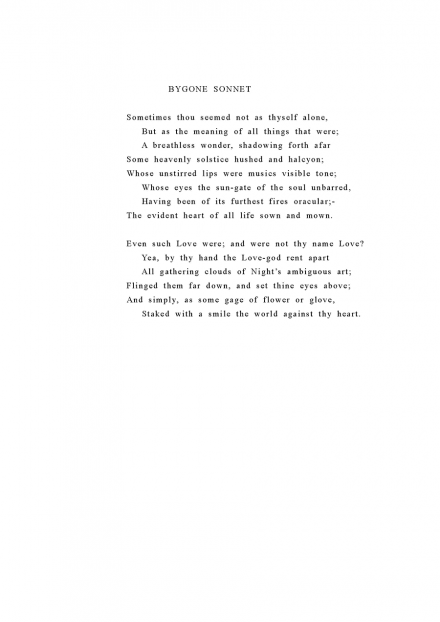
I am very happy to present you this review written by Richard Kostelanetz.
Michalis Pichler’s SOME MORE SONNET(S) was published by Greatest Hits, Berlin in 2011 in an edition of 400 copies. It collects 44 variants of a sonnet, that was originally written by Dante Gabriel Rossetti, and which was already published in 44 variations by Ulises Carrion in 1972. While Ulises Carrion used a typewriter, Michalis Pichler used a computer, probably word or open office.
I hope you enjoy it…
Michalis Pichler’s Times New Roman Sonnet belongs in the rich tradition of native German-speakers who have written highly original texts in English. Both Dieter Rot and Ernst Jandl did some; Rosmarie Waldrop has produced many.
A Berliner of partly Greek ancestry, Michalis Pichler, has done here is taken a 14-line poem by Dante Gabrel Rossetti, changed its tense from present to past, and then subjected his updated text to 44 visual/verbal enhancements that are both individually and generally revelatory.
Here’s the historic text, “Bygone Sonnet,” in familiar Times Roman type:

BYGONE SONNET by Michalis Pichler
Remembering this ur-text, consider two of Pichler’s moves:
RRRRRRRASTERSONNET,
which exemplifies visual-verbal wit.
RRRRRRRASTERSONNET by Michalis Pichler
“MISSPELLED” SONNET,
which is perhaps only a writer not born to English would risk.

“MISSPELLED” SONNET by Michalis Pichler
With words alone Pichler has made visual poetry that must be seen to be read, not picture poetry recently advertised as “visual poetry” in America or “conceptual poetry,” whose characteristic device is framing absence, which Pichler does only in the single otherwise blank page titled “Missing Sonnet.” Collectively and individually, his moves in Some More Sonnets are inventive and amusing.
As aside, I recommend an earlier Pichler book, New York Garbage Flag Profile(2005), where he photographed straightforwardly a large number of NYCgarbage piles containing an American flag in some legally desecrated condition. For captions he meticulously documents where he found each flag. In making art out of documentation, this book reminded me of Jan Hendrikse’s classic Broadway (1983), where the Dutch artist then residing in New York shot a black-white photo of ever intersection in Manhattan’s longest street. What should be made of European artists doing what Americans let alone New Yorkers, haven’t done with my home town?
As a second aside, I should note that Pichler was inspired by earlier book art by Ulisés Carrion (1941 – 2002), a Mexican residing in Amsterdam, who reworked the same Rossetti text a few decades ago. However, whereas Carrion in 1972had a typewriter, Pichler employed a computer with its available programs for superior enhancement. So his richly resonant new book refers not only to English literature by a certain earlier significant move in international book-art.
And whereas the Carrion book is hard to find, Pichler’s can be purchased for 20€ from various Internet sites. For example here.
Richard Kostelanetz, "Review – Michalis Pichler’s Some More Sonnet(s)," Blog artzines.de, September 7, 2013
